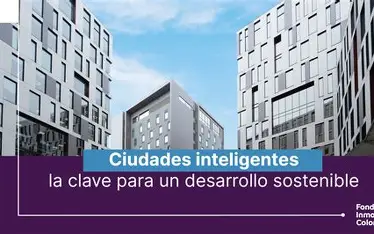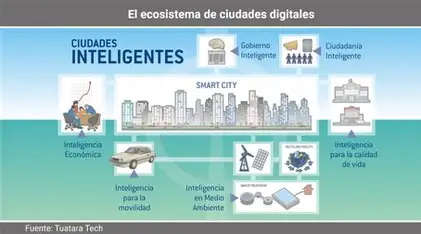
By 2050, 70% of the world’s population is expected to live in cities, and to achieve this, cities must be green, resilient, and inclusive.
The interconnected and necessary technological pillars are smart buildings, microgrids, the electrification of transportation, and data centers at the heart of the system.
Between 1970 and 2021, the number of people living in cities grew from 1.19 billion to 4.46 billion, and the Earth’s surface temperature rose 1.19°C above pre-industrial levels, according to the World Bank’s “Prosperar: hacer que las ciudades sean verdes, resilientes e inclusivas en un clima cambiante”.

On a new commemoration of World Cities Day, global attention is focused on the challenge facing urban centers: their population will continue to grow, and it is estimated that by 2050 they will be home to 70% of the world’s population. They currently produce more than 70% of global greenhouse gas emissions.
On october 31, 2025, the Global Commemoration of World Cities Day will take place in Bogotá, Colombia, under the theme of smart, people-centered cities. According to UN-Habitat, “This theme reflects the growing recognition that the transformative power of digital technologies is reshaping urban life around the world, offering profound opportunities to improve the design, planning, management, and governance of cities and human settlements. In an era marked by urban and digital transitions, cities are increasingly adopting digital technology solutions and data to provide better services to residents”.
Given this reality, and considering that energy is responsible for approximately 80% of all global greenhouse gas emissions, the main ones being carbon dioxide, methane, nitrous oxide, and fluorinated gases, it is crucial for cities to achieve greater efficiency with fewer resources. Investing in resilient urban infrastructure could generate savings of more than $4.2 trillion, according to World Bank estimates for 2019.

The key to transforming cities lies in the convergence of digitalization and electrification, a concept known as “Electricity 4.0.” This strategy helps cities become more sustainable, resilient, efficient, and inclusive.
The smart cities of the future depend on three interconnected technological pillars: smart buildings, microgrids and smart grids, and the electrification of transportation with data centers at the heart of the entire system.
Today’s buildings must be modernized to meet efficiency and sustainability goals. Nearly 50% of buildings today will still be in use in 2050, so the goal must be for both new and existing buildings to be carbon-neutral by 2030. Digitalizing buildings helps accelerate their decarbonization by creating new smart structures capable of combating climate change throughout their entire lifecycle: design, construction, operation, maintenance, and decommissioning. Connected devices and analytics software help identify and reduce energy waste. Simple digital solutions, such as wireless meters and sensors, can be quickly adapted to provide insight into and analysis of building performance.

Current grid infrastructure is vulnerable to climate impacts and fluctuating demand. The shift toward decentralized, bidirectional smart grids is critical to increasing the efficiency and resilience of cities. Microgrids enable organizations and individual users to become “prosumers” (energy producers and consumers). These microgrids intelligently optimize local energy resources, such as solar panels, wind turbines, electric vehicle charging stations, and energy storage, and communicate with the broader grid to reduce costs and improve resilience.
Decarbonizing transportation is vital, as transportation generates more than 40% of greenhouse gas emissions. Integrating the smart grid with the urban environment and electric mobility will allow users to charge their vehicles more easily, due to the increased number of power sources.
Read also:







